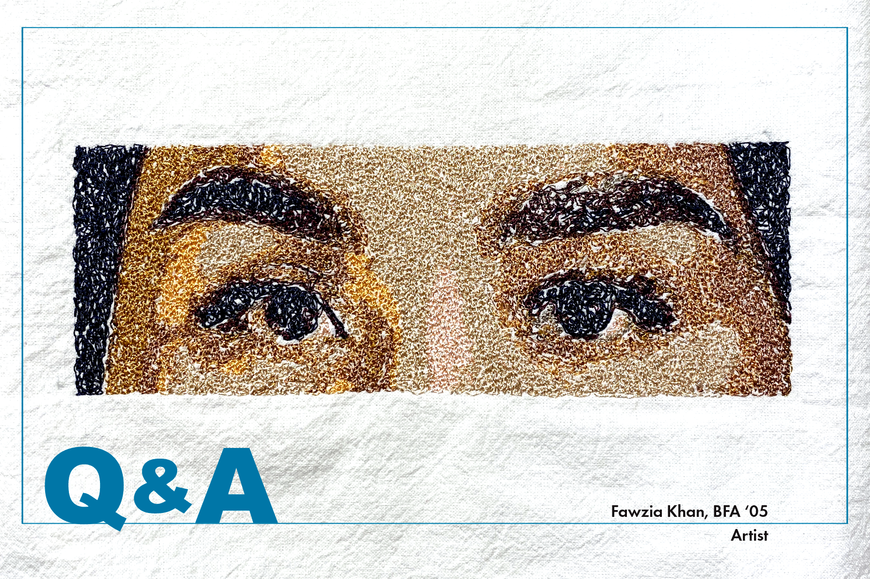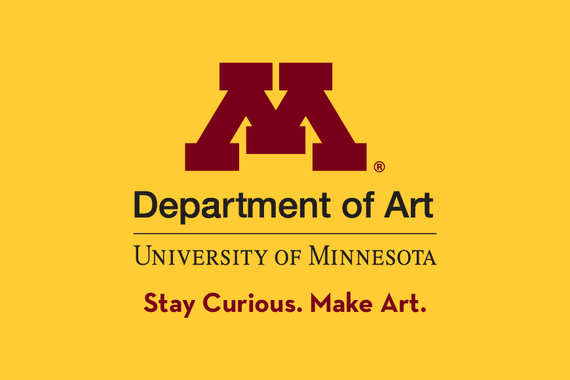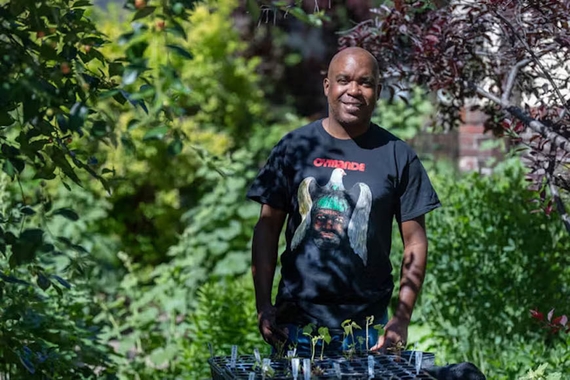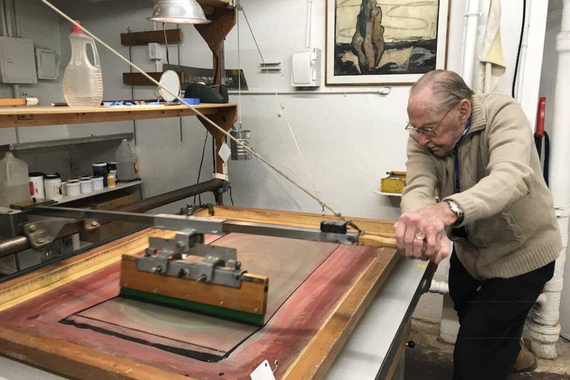Where Are They Now: Art Alum Fawzia Khan
As the Department of Art prepares to celebrate the 20th anniversary of the Regis Center for Art, we've reached out to some Art alums to learn about their time here when Regis first opened and the careers they’ve created with their art education since.
Hi Fawzia! You graduated in 2005 with a BFA in sculpture, transitioning from a career in medicine to one in art. Can you tell us more about your medical career and how you found your way to studying art?

I was a board certified Ob/Gyn practicing in Seattle for three years before the birth of my daughter. I was surprised to realize after her birth that I really didn't want to go back to work. I wanted to stay home and take care of her. So I quit my practice. Not long after that we moved from Seattle to Fargo for my husband's work. I had always been a knitter, but in Fargo, I learned how to quilt. I joined the Quilter's Guild of ND and quickly took on the role of co-editor of their newsletter. This awakened an interest in me in graphic design. I went back to school to Minnesota State University Moorhead to possibly study Graphic Design but realized after taking it and sculpture that sculpture was my passion. So I kept going. My husband took a new job in the Twin Cities when I had one class left to get my BA, so I transferred to the U and got a BFA instead.
Since making that transition, where has your artistic career taken you? Do you work as an artist full-time?
I do. After graduation I started making new work and applying for shows. My mother retired and moved here a couple of years after my graduation and I ended up devoting a lot of time to her care until she passed away 5 years ago. Since then, I have been able to spend more time on my art. I've served on the Visual Arts Committee at Hopkins Center for the Arts (I live in Hopkins). Also, I served on their Public Art Committee and was involved with the development of Art Street and the Artery (both public art projects in Hopkins). I've been a Juror for the State Fair Art Competition and was one of the inaugural artists featured in their "Artist of the Day" series. I enrolled in the Women's Art Institute the summer after my mom died and that really jump started me. I continue to participate in group and solo shows and recently have joined two artist collectives. I was fortunate to apply for and get a 2020 Artist Initiative Grant and was a finalist for the 2022 McKnight Fiber Artist Fellowship. In addition to the wood working, screen printing and foundry work I learned at the U, I've taken classes to learn stone carving, weaving, screen printing on fabric and have incorporated some of my older skills of embroidery and knitting into my artwork. I love learning new skills! I have two solo shows coming up in 2024, one at Artistry in January and the other at SooVAC in November, so I will be busy making work for those.

You were a student here when the Regis Center first opened. What do you remember most about transitioning from the old building to the new one?
I never made the transition. I came to look at the different schools when my husband was considering taking the job. That was the exact time when the transition was happening, so I started at the U in the new building. I had seen the old building two years before, and I thought it was a huge improvement. The thing that really sold me on the U was the foundry, since I was bronze casting at the time.
What were the most valuable aspects of your art education here — was it the teachers, the community of students, the facilities, or some combination thereof? What has stuck with you the most in the years since?
I would have to say that I didn't feel as close to the teachers as I did at Moorhead State. This is a much bigger school with graduate students and I felt as though most of the professors had to devote a lot of time to the grad students. I also had only three or four professors because I was here for two years, and I thought they were great. The facilities were outstanding which opened up all sorts of possibilities for me while at school. I am still good friends with some of the students I met here at the U, and I would have to say that it's the community of students and teachers which has stuck with me the most.
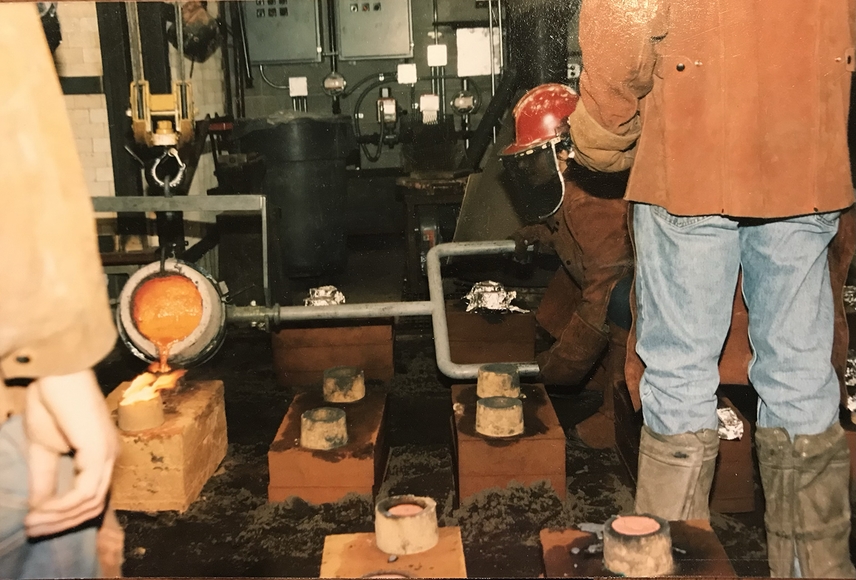
What would you say to people who want to major in Art, but aren't sure how that might help them make a living?
You will have to be creative. I was lucky that I was married to a man who made a good living so I was able to devote my free time to making art and not having to worry about making ends meet. I realize that's a huge luxury that most people don't have. There are ways to make a living as an artist which usually involves taking a job and making art in your spare time. I would advise students to develop other skills as well, particularly in communications, digital skills, social media and administrative skills. Minnesota is a good place for artists. There are lots of opportunities for grants and positions in arts organizations. People talk about doctors working long hours and 60 – 80 hour weeks (or more), but I think if you want to make a living making art, you probably will work just as hard.
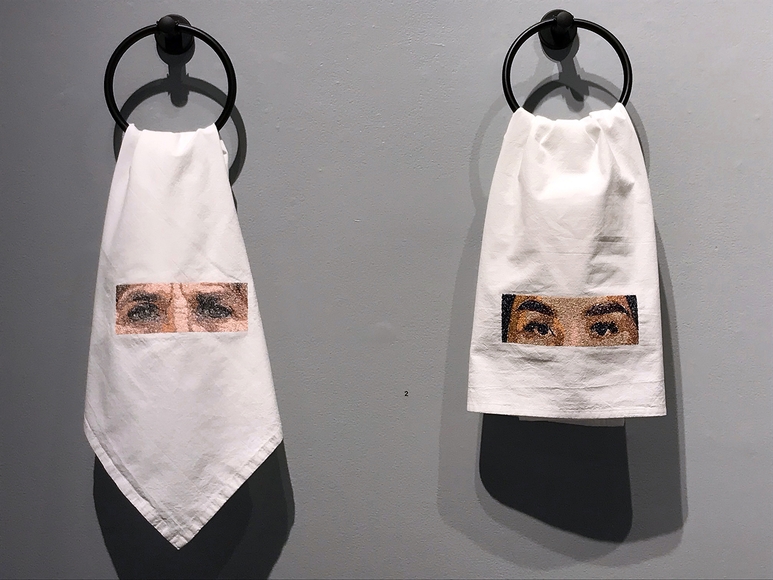
Is there any advice you wish you could go back in time and give yourself as a student at the U?
Slow down, take more classes, expose yourself to new ideas and experiences and teachers. Don't be in a hurry to graduate. Ask for more feedback and critique and don't take it personally. Relax. It was difficult at the time with a husband who worked 60 – 80 hours/week and an elementary-aged child to really take the time I would have liked to, to fully appreciate what was available.
To see more of her work, visit Fawzia Khan's website or follow her on Instagram @fawziakhanart.
Learn more about the Regis Center for Art 20th Anniversary Celebration.
